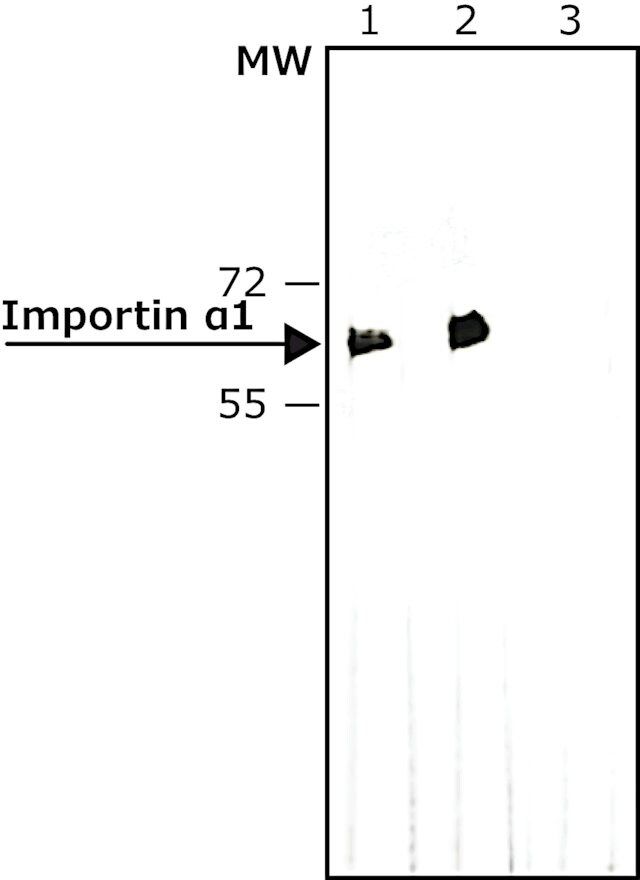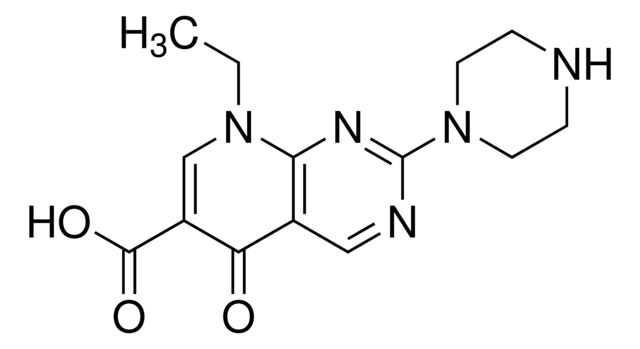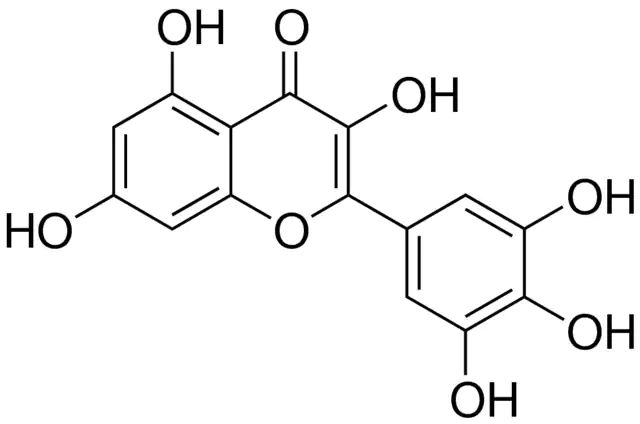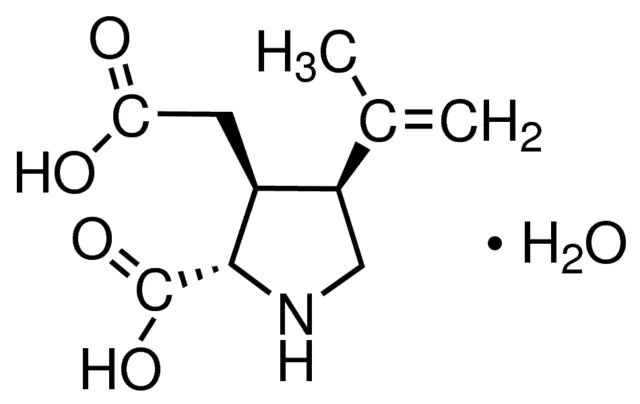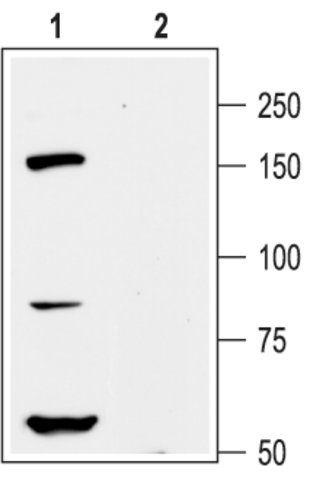产品说明
一般描述
The KPNA2 (karyopherin subunit α 2) consists of 529 amino acids and has a molar mass of 58kDa. The protein consists of an N-terminal hydrophilic importin β-binding domain that has an auto-inhibitory function to ensure the translocation of KPNA2 occurs only when it is bound to importin β and a cargo molecule. It also contains a central hydrophobic region made up of 10 armadillo (ARM) repeats, which binds the cargo′s NLS (nuclear localization signal) and CAS, the factor involved in the recycling of KPNA2 to the cytoplasm. The C-terminus has a short acidic region whose function is yet to be determined. The gene is mapped to human chromosome 17q24.2.
Monoclonal Anti-Importin α1 (rat IgG2α isotype) is derived from the hybridoma 1A6 produced by the fusion of mouse myeloma cells (SP2/0), and splenocytes from BN/Crj rats.
特异性
Monoclonal Anti-Importin a1 recognizes human, canine, mouse, and chicken Importin a1 (approx. 60kDa)
免疫原
recombinant mouse importin α1.
应用
Monoclonal Anti-Importin α1 antibody produced in rat has been used in:
- immunoblotting
- immunofluorescence
- immunocytochemistry
生化/生理作用
The gene KPNA2 (karyopherin subunit α 2), also referred to as importin α1, encodes a member of the importin α family. It participates in the normal nuclear localization of the MRN (MRE11-RAD50-NBS1) complex. It also facilitates proper formation of the nuclear foci of the complex. KPNA2 is the sole member of its family to interact with NBS1 (Nijmegen breakage syndrome 1), a component of the MRN complex. It also functions in the tumor suppression functions associated with NBS1 complex. Inhibition of the interaction between KPNA2 and NBS1 can lead to decreased radiation-induced nuclear focus accumulation, DSB (double strand break) repair, and cell cycle checkpoint signaling of NBS1. KPNA2 is found to regulate epidermal proliferation and differentiation and participates in the activation of cellular signaling in blood lymphocytes. It has been linked to Russell-Silver syndrome. Overexpression of this protein has been associated with several types of cancer and it may serve as a potential biomarker.
外形
Solution in 0.01 M phosphate buffered saline, pH 7.4, and 15 mM sodium azide.
储存及稳定性
For continuous use, store at 2-8 ℃ for up to one month. For prolonged storage, freeze in working aliquots. Repeated freezing and thawing is not recommended. Storage in frost-free freezers is also not recommended. If slight turbidity occurs upon prolonged storage, clarify the solution by centrifugation before use. Working dilution samples should be discarded if not used within 12 hours.
免责声明
Unless otherwise stated in our catalog or other company documentation accompanying the product(s), our products are intended for research use only and are not to be used for any other purpose, which includes but is not limited to, unauthorized commercial uses, in vitro diagnostic uses, ex vivo or in vivo therapeutic uses or any type of consumption or application to humans or animals.
基本信息
| MDL编号 | MFCD06798706 |
| NACRES | NA.41 |
产品性质
| 质量水平 | 200 |
| 生物来源 | rat |
| 偶联物 | unconjugated |
| 抗体形式 | purified from hybridoma cell culture |
| antibody product type | primary antibodies |
| 克隆 | 1A6, monoclonal |
| 形式 | buffered aqueous solution |
| 分子量 | antigen ~60 kDa |
| species reactivity | human |
| technique(s) | immunocytochemistry: suitable microarray: suitable western blot: 0.1-0.2 μg/mL |
| UniProt登记号 | P52292 |
| 运输 | dry ice |
| 储存温度 | −20℃ |
| Gene Information | human ... KPNA2(3838) mouse ... Kpna2(16647) |

